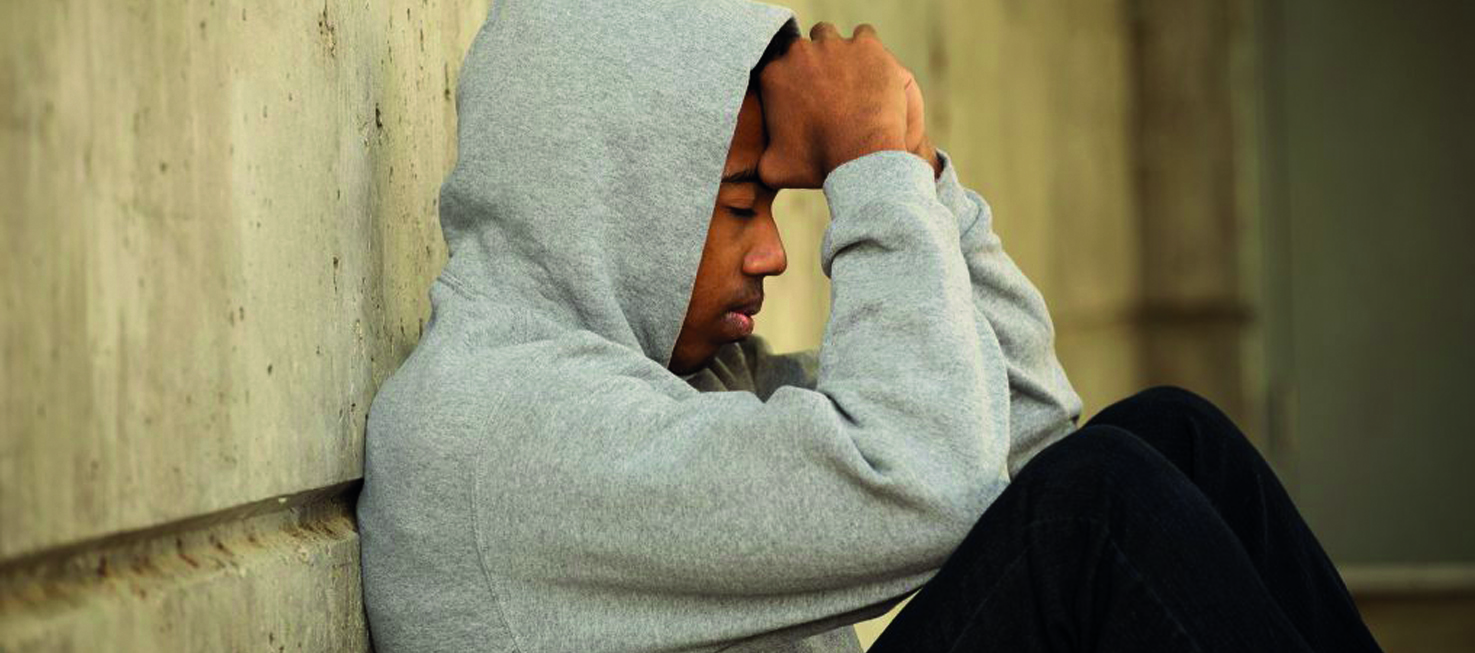[:en]Spohn believes JDAI has been less than successful in keeping some low and medium risk youth out of detention – which is the whole point of the thing,” adding, “We still probably do have youth that end up in detention that shouldn’t be there.”
“It’s really important we reserve incarceration for the kids who scare us, not for the kids who just make us anger or irritate us,” Summers said. “It in itself can be so harmful, especially to lower risk youth.”
“The success rate is much better if they’re at home with their family. It’s more cost effective, too,” Pannkuk said.
“Any funding that can go towards prevention and intervention rather than punishment and detention, which is incredibly expensive, would be a smarter way to spend the dollars we have,” Spohn said.
Stennis-Williams witnesses the fallout through the Reconnect Success diversion program she runs.
“When I see kids come into my program, I see the system failure. When I go to the Nebraska Correctional Youth Facility, I see the result of that failure.”
Equity is paramount.
“Every youth should be given every opportunity. It shouldn’t be because of where you live or the color of your skin or whether you’re poor or not,” LeFlore said.
Stennis-Williams and LeFlore want more diversity among juvenile justice professionals.
“A diverse staff allows you to learn from the beauty of diversity and understand the cultural issues and situations,” Stennis-Williams said.
She and LeFlore also advocate for legacy and current system families to have more voice and agency at the table. “Those closest to the problem are closest to the solution,” she said. “We have to create a genuinely inclusive environment that welcomes to hear the frustrations folks are having,” LeFlore said.
“You really can’t get systems change without community involvement and engagement and getting people around the tables and having honest conversations,” Summers said.
Pannkuk said OYS endeavors to move to “a customer service as opposed to system-driven approach.”
Though statutes require Douglas County youth be provided legal counsel, Summers said in much of Neb. “there can be incredible differences in the access kids get to this constitutional right for an advocate.”
LeFlore said minus counsel youth and families often lack the ability to make informed choices.
Wherever reforms happen, Spohn said, there’s a cascade effect.
“It’s not like if there’s a change in one level of juvenile justice it doesn’t impact the other levels. All these systems are interconnected. Any progress in one part may look like we’ve taken a step back in another part because the kids don’t just disappear – they’re just addressed by different stages of the system.”
“There’s been some small gains but not enough to make the impact we need to reform our system,” Stennis-Williams said. “These kids and families are suffering. It’s time for Douglas County to step in and take ownership of juvenile justice reform.”
She wants the county “to create an office of public advocacy to look at the numbers and then drill down to see what’s causing it and then make recommendations”
Juvenile Justice Center’s Anne Hobbs said progress has been made but added, “It’s just hard to see because we’re in the middle of the stream.” She said more uniform best practices would net more progress.
“There’s a ton of diversion models and programs and every county attorney runs them just a little bit differently. We need to figure out what works in Nebraska. To do that you need all the programs to use the same definitions, agree to the same terminology and then enter data into a system and then you’ll get results from across the state on the same program types.”
Her center built, with the Nebraska Crime Commission, a statewide evaluation system that does just that.
“We’re able now to evaluate all those programs across the entire state using the same scoring mechanism. As a state we’re now counting things the same way and, as ridiculous as it sounds, in Douglas County there’s now agreement on certain race and ethnic categories.”
Spohn is cautiously hopeful but rues the system’s local, siloed nature makes it resistant to widespread change.
“One frustration is getting people to listen and learn as opposed to rebut,” Pannkuk said. “The bigger frustration is just the complete complexity of the system. The devil’s in the details. You’ve got multiple large entities trying to figure out how best to serve the uniqueness of one individual. But they’re trying, they’re all really trying.”
Read more of Leo Adam Biga’s work at leoadambiga.com.[:es]Spohn considera que JDAI “ha tenido menos éxito en mantener a algunos jóvenes de riesgo bajo y medio fuera de la detención, pues ese es todo el punto. Probablemente todavía tenemos jóvenes que terminan en detención y que no deberían estar ahí”.
“Es muy importante que dejemos el encarcelamiento para los niños que nos asustan y no para los niños que nos hacen enojar o nos irritan”, dijo Summers. “Esto puede ser muy dañino, en especial para los jóvenes de bajo riesgo”.
“La tasa de éxito es mucho mejor si están en el hogar con sus familias. También reduce los costos”, dijo Pannkuk.
“Usar los fondos para la prevención y la intervención en lugar de obra el castigo y la detención, la cual es extremadamente cara, sería una forma más inteligente de gastar los dólares que tenemos”, dijo Spohn.
Stennis-Williams, a través del programa de penas alternativas que ella administra, ha sido testigo de las consecuencias.
“Cuando veo a los niños que llegan a mi programa, veo las fallas del sistema. Cuando voy a la Nebraska Correctional Youth Facility, yo veo el resultado de esa falla”.
La equidad es fundamental.
“A cada joven se le debería de dar una oportunidad. No debe ser por en dónde viven o el color de si piel o si es o no pobre”, dijo LeFlore.
Stennis-Williams y LeFlore quieren más diversidad entre los profesionales de justicia juvenil.
“Un equipo de trabajo diverso te permite aprender sobre lo hermosa que es la diversidad, así como comprender los problemas y cuestiones culturales”, dijo Stennis-Williams.
Ella y LeFlore también defienden que las familias en el sistema anterior y el sistema actual sean escuchadas y tengan más peso. “Aquellos más cercanos al problema son los más cercanos a la solución”, nos dijo LeFlore. “Tenemos que crear un ambiente realmente inclusivo que esté abierto a escuchar sobre las frustraciones que pasan las personas”.
“No se pueden cambiar los sistemas sin la participación y acción de la comunidad y sin que las personas se siente para hablar de forma honesta”, dijo Summers.
Pannkuk dijo que OYS busca ir hacia “un servicio con base en el cliente y no sobre un enfoque guiado por el sistema”.
Aunque los estatutos requieren que a los jóvenes en el Condado de Douglas se les proporcione asesoría legal Summers dijo que en gran parte de Nebraska “pueden existir diferencias considerables en el acceso que tienen los niños a este derecho constitucional a un defensor”.
LeFlore dijo que cuando no tienen asesoría legal, los jóvenes y las familias usualmente no tienen la habilidad para tomar decisiones informadas.
Cuando ocurre una reforma, menciona Spohn, hay un efecto en cascada.
”No es como si un cambio en un nivel de justicia juvenil no impacta los demás niveles. Todos estos sistemas están interconectados. Cualquier progreso en una parte puede parecer como un paso hacia atrás en otra parte pues los chicos no desaparecen sino que son tratados por diferentes etapas del sistema”.
“Han habido algunos pequeños logros pero no lo suficiente como para tener el impacto que necesitamos para reformar nuestro sistema”, dijo Stennis-Williams. “Estos niños y sus familias están sufriendo. Es momento de que el Condado de Douglas actúe y empuje la reforma en justicia juvenil”.
Ella quiere que el condado “cree una oficina de defensa pública que revise las estadísticas y trabaje pata ver qué está ocasionando las cosas y entonces realizar recomendaciones”.
Anne Hobbs del Juvenile Justice Center dijo que se ha progresado, pero que “es difícil verlo pues estamos a la mitad del camino”. Ella dijo que tener las mejores prácticas uniformes permitiría tener un mayor proceso.
“Hay muchos modelos y programas de penas alternativas y cada fiscal del condado los administra de una forma un poco diferente. Es necesario que todos los programas usen las mismas definiciones, acuerden la misma terminología y entonces ingresen los datos en un sistema, para de esa forma obtener resultados en todo el Estado sobre los mismos tipos de programas”.
Su centro construyó, junto con la Nebraska Crime Commission, un sistema de evaluación a nivel estatal que justamente hace eso.
“Ahora podemos evaluar todos esos programas en todo el Estado usando el mismo mecanismo de calificación. Como Estado, ahora estamos contando las cosas de la misma forma y, por más absurdo que suene, en el Condado de Douglas ahora hay un acuerdo sobre ciertas categorías de raza y etnia”.
Spohn es cautelosamente optimista, pero no acepta la naturaleza local y aislada que le hace resistirse a un cambio más amplio.
“Algo que requiere de mucho trabajo es lograr que las personas escuchen y aprendan en lugar de refutar”, dijo Pannkuk. “La gran frustración es la complejidad del sistema. Hay diversas grandes entidades tratando de encontrar la mejor forma de servir la singularidad de una persona. Pero lo están intentando – pero todos lo están intentando”.
Lea más del trabajo de Leo Adam Biga en leoadambiga.com.[:]




